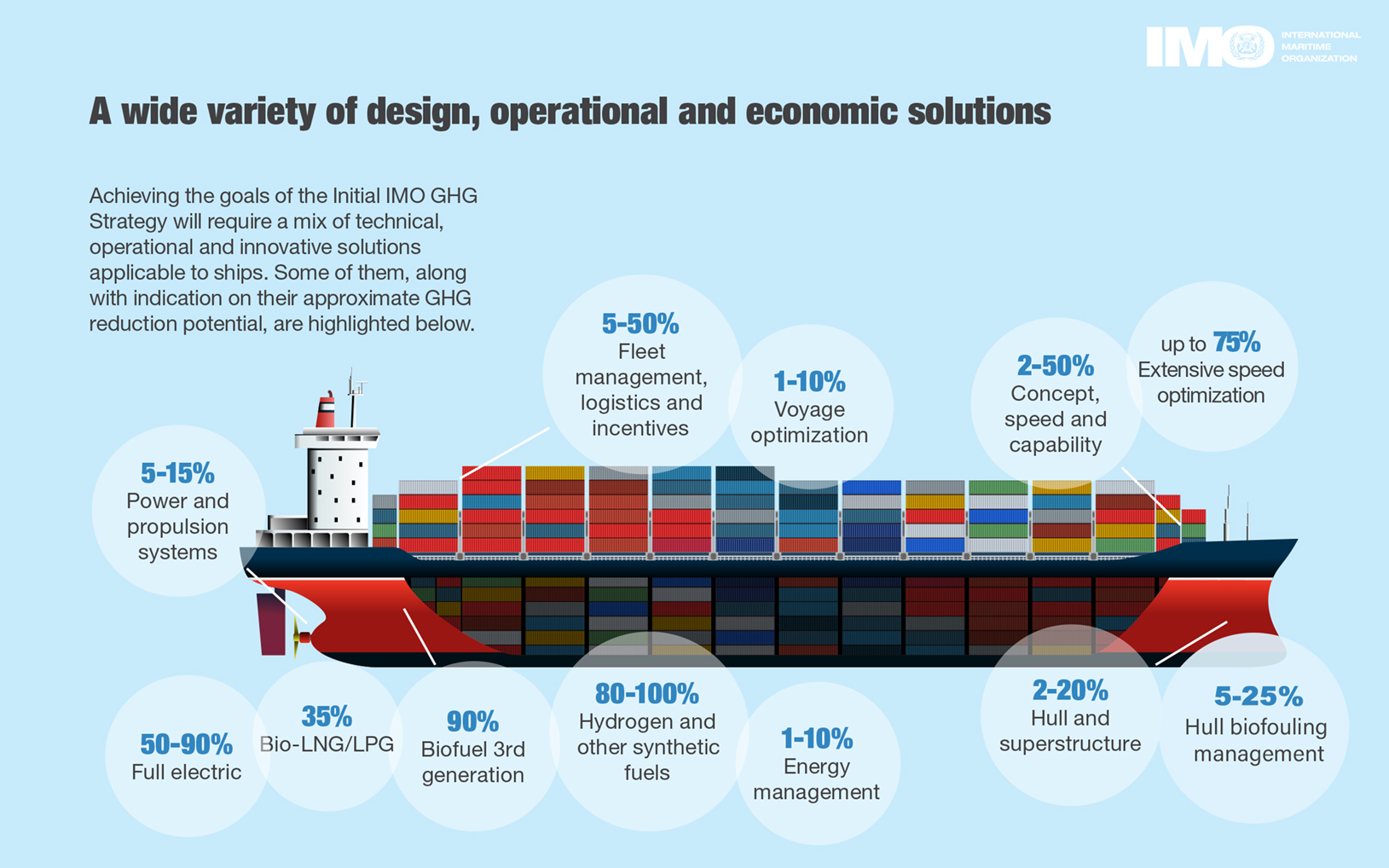All ships must calculate and report their Energy Efficiency Ship Index (EEXI) data to determine their energy efficiency, operational carbon intensity indicator (CII) and CII rating starting Jan 1, 2023.
The regulation kicked in after amendments to the International Convention for the Prevention of Pollution from Ships (MARPOL) Annex VI entered into force on Nov 1, 2022.
The amendments require ships to boost their energy efficiency in the short term – pushing global shipping to cut 40 per cent of its greenhouse gas emissions and carbon intensity by 2030.
IMO Secretary-General Kitack Lim said the greenhouse gas (GHG) reduction measures, adopted in 2021, form a comprehensive set of amendments to MARPOL Annex VI, paving the way for IMO’s future mid-term GHG reduction measures.

Among the things a ship can do to improve its rating include hull cleaning to reduce drag; speed optimisation; installation of low energy light bulbs; installation of solar/wind auxiliary power for accommodation services; etc.
IMO said member states are revising the IMO Initial GHG Strategy for adoption in mid-2023.
Plans are also underway to develop mid-term measures – including incentivising the switching from fossil fuels to low- and zero-carbon fuels – to decarbonise global shipping by the mid-century.
“We are, in tandem, working to support member states in their implementation of measures and to ensure that no one is left behind in this transition towards a decarbonised future for shipping,” said Mr Lim.
The development of mid- and long-term GHG reduction measures consists of three phases:
- Phase I – Collation and initial consideration of proposals for measures in order to be able to understand and compare their main features and implications so as to identify the key issues to consider in relation to each proposed measure, along with considerations of their potential impacts on States in the application of Circular MEPC.1/Circ.885 on the Procedure for assessing Impacts on States of candidate measures. The timeframe for Phase 1 is spring 2021 to spring 2022.
- Phase II – Assessment and selection of measure(s) to further develop. Information from Phase I is to be built upon to select the measure(s) to further develop in as a priority. This decision will be based on an assessment of the proposed measures, in particular their feasibility, their effectiveness to deliver the long-term levels of ambition of the Initial Strategy and their potential impacts on States. The time period for Phase II is spring 2022 to spring 2023. Decisions on measures to develop as a priority may be taken in conjunction with the revision of the Initial Strategy.
- Phase III – Development of (a) measure(s) to be finalized within (an) agreed target date(s). In the case of amending existing legal instruments, amendments will be prepared, as appropriate. In the case of developing a new legal instrument, a framework for consideration by the MEPC will be prepared in order to decide on the way forward. In order to support this process, a detailed outline of the framework supporting information and assessment of how the selected measure(s) will meet the long-term levels of ambition could be undertaken. Phase III target date(s) are to be agreed in conjunction with the IMO Strategy on Reduction of GHG Emissions from Ships.
Read more:
- Decarbonisation action plan to transition seafarers into green shipping
- World Maritime Theme 2023: ‘MARPOL at 50 – Our commitment goes on’
Click here for more feature stories in Samudra.



